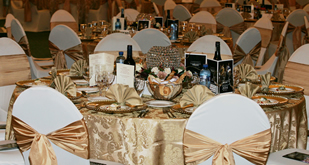This year marks the centenary of the birth of one of the greatest racehorses of all time, Man O’ War. To honour him, the National Museum of Racing and Hall of Fame, into which he was inducted in 1957, opened a special exhibit in his honor, “Man o’ War at 100”, on his 100th birthday, March 29 this year. Fittingly this year also marks the 150th anniversary of one of America’s greatest races, the Belmont Stakes, which is named after the family who bred Man O’ War. Man O’ War’s sire Fair Play was a good racehorse and was a three-time leading North American sire. His dam Mahubah by Rock Sand was no star, but was well thought of in breeding circles.
Man O’ War inherited the violent disposition of his grandsire, Hastings, and was a handful as a youngster.
However, after his trainer Louis Feustal had cooled his temper to a manageable level, he made a stunning debut at Belmont Park, winning a two-year-old maiden hard held by six lengths.
His subsequent feats on the racecourse are best summed up by the National Museum Of Racing and Hall of Fame, who said:
“The 1920s are considered a golden age for sports heroes in America. However, no athlete in the land was more revered than horse racing’s greatest marvel, the mighty Man O’ War. Babe Ruth had charisma. Jack Dempsey had power, Red Grange had speed and was known as the “Galloping Ghost.” Man o’ War had all of those attributes. But instead of being a galloping ghost, Man O’ War was an equine freight train. In 1920, Man O’ War won all eleven of his starts to conclude a two-year run in which he won 20 of 21 starts and compiled an all-time earnings record of $249,645. When all was said and done, Man O’ War had established three world records, two American records, seven track records and equaled another track standard.”
In his only loss he was standing sideways when the tape was released and lost many lengths. He was then hampered in the closing stages. Fittingly the winner’s name was Upset, and legend has it that the race popularised the sporting term “upset”.
Man O’ War was not entered in the 1920 Kentucky Derby because his owner, Samuel Riddle, did not believe in racing at the distance of ten furlongs so early in a young horse’s career. However, he won the Preakness by 1,5 lengths, beating Upset, and won the Belmont Stakes by 20 lengths, setting a world record. Man O’ War was retired to stud after his dominant three-year-old year. He had already carried as much as 138 pounds (63kg) in a race and conceded as much as 34 pounds (15 kg). Had he raced at four he would have started at 140 pounds.
Riddle has often been criticised for the quality of mares he allowed to be bred to Man O’ War. However, according to “Thoroughbred Heritage”, this, in retrospect, appears to be as a result of a “sour grapes”. In actual fact Riddle had taken the advice of expert horsemen like John Madden and bloodlines specialist William Allison in selecting the broodmares that were to be his first mates. Consequently, the crop produced three champions, American Flag (Belmont, Dwyer, Withers Stakes), Florence Nightingale (C.C.A. Oaks) and Maid At Arms (Alabama Stakes, Pimlico Oaks).
Man O’ War was the leading sire in North America of 1926 and was runner-up in 1928, 1929 and 1937, despite Riddle restricting him to about 25 mares a year, The Jockey Club credits him with 62 stakes winners from 381 named foals,
Man O’ War’s most successful sons at stud were War Admiral and War Relic. War Relic’s branch of the male line has survived today through the like of Tiznow, one of the very few modern stallions who does not trace back on his sire line to Eclipse.
Man O’ War was bred by August Belmont Jr.
Belmont’s father of the same name financed the Jerome Park Racetrack which staged the first running of the Belmont Stakes in 1867. Belmont Jr was the first president of The Jockey Club and was chairman of the New York State Racing Commission. In 1905 he built a new racecourse on Long Island in New York and it was named Belmont Park. The Belmont Stakes is still held there today.
Belmont Jr inherited Nursery Stud, established in 1867 by his father in New York. Belmont Sr later leased a farm property in Kentucky, located about three miles outside Lexington, and after transferring all of the breeding business there, Belmont Jr developed a stud farm, Kentucky Nursery Stud, which bred 129 American Stakes winners. The greatest of these, Man o’ War, was born while Belmont Jr was serving overseas in World War I. In his absence, his wife Eleanor named the new foal “My Man o’ War”. However, Belmont Jr was in his mid-sixties and decided to disband the stable. The “My” was dropped from the name and Riddle bought Man O’ War at the Saratoga Yearling Sale for what turned out to be a bargain $5,000.
Man O’ War stood 16.2 1⁄2 hands, with prominent withers and a high croup, but was sometimes faulted for a dipped back. He had virtually flawless legs and solid bone, traits he passed on to his offspring. He had a slightly Roman nose and notably high head carriage. His nickname was “Big Red”.
Man o’ War will be remembered for capturing the non-racing public’s attention in a way no horse had before and few have since. The men of the First Cavalry Division awarded him the rank of honorary Colonel, and upon his death accorded him full military honours. Man O’ War received up to a hundred visitors a day at Faraway Farm in Lexington, Kentucky.
His beloved stud groom Will Harbut introduced him as “The Mostest Hoss there ever was”. Harbut was buried alongside his great friend.
By David Thiselton





